Last year I started working on a Japanese black pine that was developed as a landscape tree (here’s Part 1 and Part 2 of the story). This year’s work was less exciting than last year’s, but it made me much happier. Why? Because I’m now committed to a design direction (i.e. I cut off most of the remaining branches). Here’s a picture of the tree from last year:

April 2012 – new needles are just starting to elongate
Last year’s needles grew in well and the tree regained some vigor. In fall I removed the old needles.
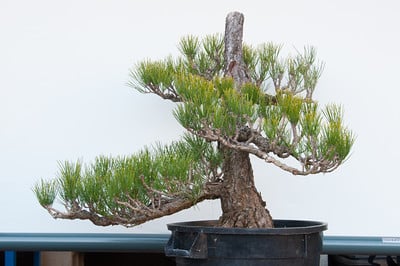
January 2013
Not long after removing the old needles, I worked on the tree with Daisaku Nomoto. Nomoto and I agreed that a semi-cascade approach would be a good way to develop the tree. Originally I thought about making a full cascade, but the massive base lends itself better to the semi-cascade form. Were the transition from trunk to first branch more interesting and gradual, a cascade approach might have been the better option. With that decided, I sawed off the most of the top two branches.
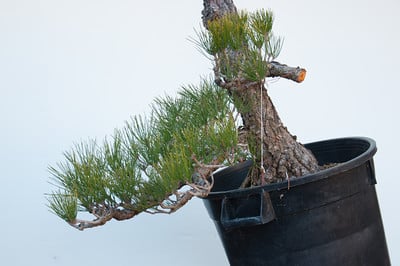
After removing the top two branches
We left a little growth on the top branch to reduce the shock to the tree and to preserve as much lifeline as possible until it’s time to remove the top part of the trunk and create jin and shari.
To help me identify the front of the tree and planting angle, Nomoto rigged a copper wire and plumb bob. When the tips of the two wires meet, I’ve found my angle. The vertical aluminum wires indicate the selected front.
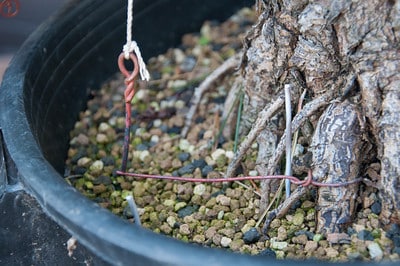
Plumb bob
Nomoto commented that the rootbase could be better developed. To help existing roots thicken and to encourage new roots, Nomoto recommended I cover the roots with soil.
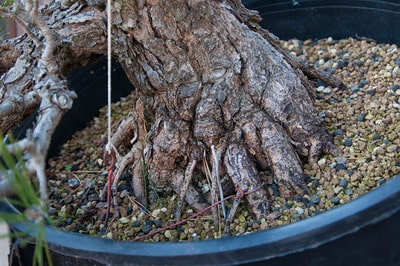
Root base – front
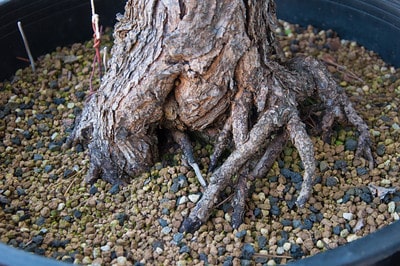
Root base – back
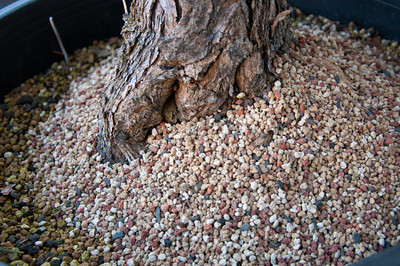
Roots covered with bonsai soil
With that finished, the tree is all set until decandling time.
Subscribe to Bonsai Tonight
New Posts Delivered Every Tuesday and Friday
Carolee N Bier says
When you bare-rooted half the root ball, wouldn’t that mean the water would drain through half the root, and never get to the other half? Please instruct me in your reasoning for your method. Thanks!
Jonas Dupuich says
Hi Carolee,
Good question – the answer depends on the soil. If the old soil has dried into a solid block, then yes, very little of the water will soak into the old soil. In these cases I often create openings in the old soil with an awl or a chopstick which I then fill with new soil – letting water into these gaps helps loosen up the old soil and makes subsequent repottings easier. But as long as the ends of the roots protrude from the old soil into the new soil, they’ll stay healthy and continue to grow.
In this case of this pine, the old soil drained fairly well so the roots on that side will be ok. I’m looking forward to repotting the tree next year and taking a look!
Thanks,
Jonas